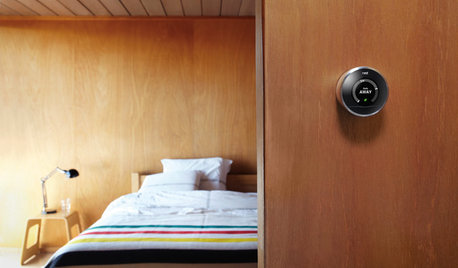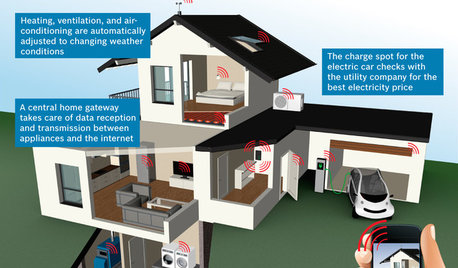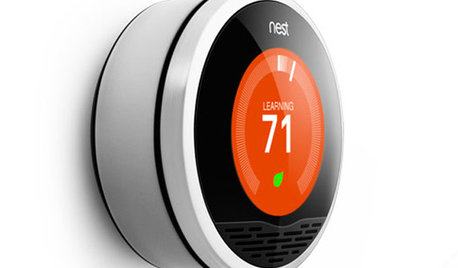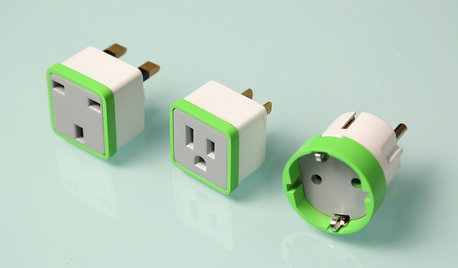programmable remote thermostat for terrarium heaters
I'm in the middle of designing a terrarium to house some tropical lizards and tree frogs. The plan is to make it as maintenance free as possible. The temperature of the room that the terrarium will be in will vary greatly throughout the year and the time of day. Because of this, I had to search long and hard to find a thermostat to keep a proper climate for my critters. The problem with the ones I found in the pet store was that they only have one temperature setting. I wanted one that had at least two settings to be able to control the night time heating as well. I managed to find one online that had a day and night setting but it was $100. There were other ways of making it work with two different thermostats and a timer, but they would've been expensive options as well. Finally I stumbled on a programmable thermostat that could be easiy converted to suit my needs. I decided to post this message to help others in the same situation. So here goes:
STEP 1:
Read this through. I'll tell you how I did it and you can decide for yourself how you want to do it. Most of the materials needed can be found around the house of any handyman/woman. I'll leave a summarized material list on the bottom. Don't be discouraged if it sounds too complicated or too lengthy a project. Even an unexperienced do-it-yourselfer can do it. The hardware store employees should be able to help you get the materials you need if you're unfamiliar with them and once you have the materials in front of you, It'll all make sense. It took me longer to write this post than it did for me to complete the project.
STEP 2:
Hop in your car and drive down to your local Menards to pick up any materials you need. I say Menards because this is where I found the LUX "Smart Temp" WIN100 thermostat. It's made to plug into a wall outlet. It then has a thermostat controlled outlet that you plug your heating/cooling device (such as a space heater or air conditioner) into. Basically it works just like any thermostat you'd get from the pet store, it's the same price ($40), and it's programmable! Now I know you're thinking "How can it control the temperature if it's plugged into an oulet?" Relax, I'll tell you. You pick up an extension cord, preferrably the biggest , ugliest one you can find and.... No,no. I'm just kidding. You convert it into a remote thermostat! Prior to modifying the thermistat you may want to refer to the tests in step 19 to make sure that it works properly. It may be kind of hard to return if you figure out that it doesn't work after the fact.
STEP 3:
Wait! maybe I should explain to you how the thermostat works before we go any further. You see the thermostat is controlled by an electrical device called a thermistor. The thermistor communicates with the brain of the thermostat by changing its resistance with the change in temperature. The thermistor on this particular thermostat is external and is located on top in the back. It looks like an antenna (the manual has a picture of it if you're unsure). It has an 18 gauge 2 conductor cable that plugs into the back of the thermostat. All we're going to do (well you, I did mine already) is cut this cable and splice the thermistor onto a piece of 18 gauge speaker wire. Pretty simple! Now technically this throws the UL rating of the thermistat out the window so don't tell anybody I told you about this. It'll be our little secret ;) Don't worry, the control part of the thermostat is low voltage so you and your critters will be alright. Ok, on to step 3.
STEP 3:
Remove the four screws in the back. This requires a small #1 phillips head screwdriver. Do not open yet! Set the screws aside in a safe place.
STEP 4:
The thermostat contains an electronic circuit board. I don't know how sensitive it is but some can get fried out simply with a static shock and the manual warns of this as well. To be on the safe side you're going to want to ground yourself off. I'm not going to tell you to stick something conductive into the ground prong of an outlet like I did. Somebody could stick it in the wrong hole and get shocked. No, that would be irresponsible on my part. I would reccomend plugging in an appliance or tool with a 3 prong plug (hopefully you didn't break off the third prong to make it fit in a 2 prong outlet) and touch an exposed metal part. This will effectively bleed off any static charge you may have built up. Now as long as you stay in one place you should be OK. To be on the safe side though, I'd still try to avoid touching the circuit board.
STEP 5:
Remove the plastic grommet that holds the thermistor cable from the back of the thermostat. This can be done sqeezing it together (it's actually made of 2 pieces that are held apart by the cable to grab onto the outside of the hole around it) and pulling it out gently. Set the grommet aside with your screws. I would also reccomend pulling out the on/off switch on the right hand side so it doesn't get lost.
STEP 6:
Being careful not to touch the circuit board, mark one of the 2 wires of the cable from the inside of the thermostat with a permenant marker. The 2 terminals on the circuit board are orientated vertically, so make note if the marked wire is on the top or the bottom. Then mark the same wire on the outside by the thermistor. This is done to make sure that you wire it back up the same way you took it apart. I don't think that polarity makes a difference in this case, but it's just to be on the safe side.
STEP 7:
The two wires have female crimps on the end that plung into a couple of male ends coming of the circuit board. Very gently pull the wires off from their terminals in the thermostat with a pair of needle nose pliers and completely remove the thermistor.
STEP 8:
Now before you begin to cut the thermistor cable you have to decide how you want to wire it back up. I didn't have any female crimp ends of the correct size on hand, so I planned on reusing the existing crimped ends. If you want to crimp your own ends on, it'll make things easier. This is because it'll allow you more wire to work with while splicing the thermistor and free up the already limited space inside the thermostat where the original crimped ends will be made. The problem is I don't know the exact size crimps you need. They're 18-22 awg (red) crimps with either a 3/16" or 1/8" female end. If you're going to reuse the ends, cut the cable in the middle. If not, cut them off at the very end.
STEP 9:
Decide where you're going to plug the thermostat in and figure out how much 18 gauge speaker wire you'll need to get from there to the desired location on the inside of the tank. I used a 15' piece. It was longer than I needed, but the slack can always be neatly coiled up at the thermostat. I figure it beats being too short if I have to change plans and move it farther away (last time I checked, they don't make a cable stretcher).
STEP 10:
Pull the 2 wires apart on all the ends that will be spliced up to 1" back and then strip the ends 1/4" back.
STEP 11:
This step is optional. I tinned (coated the wires with solder) before crimping for a better connection. If you do not have a soldering iron, then you'll probably still be OK if you skip this step. If you do decide to tin your ends first be careful not to let the thermistor wires get too hot. This may be able to damage the thermistor. That's another reason why I think leaving more wire to work with on that end is good. If you're reusing the original crimps and you're going to tin them, do not do it with the wires plugged into the thermostat. Sounds like common sense, but if I don't say it, someone will do it.
STEP 12:
Before making your splices, slide a 4" strip of 1/2" heat shrink over the speaker cable. Some of you may be thinking "Does he think I'm some sort of electrician? How am I supposed to know what heat shrink is?" Heat shrink is a rubbery tubing that slips over wires/terminations and then shrinks down to a contoured fit when heat is applied. Heat guns, which are like blow dryers on steroids, are made specifically for this purpose. No heat gun? No problem! A blow dryer works too. I've even used a cigarette lighter on heat shrink. The lighter's not a good idea here. You could very easily damage the thermistor. Heat shrink tubing can be found in the electrical department at almost any hardware store. There's even a kind with an adhesive on the inside that becomes active when you heat the tubing. It's supposed to make it watertight. I opted to use the regular heat shrink and fill it with 100% silicone caulk (aquarium safe silicone caulk can also be used if you're leery) before shrinking it. It doesn't always shrink down all the way so I didn't want to chance it with adhesive tubing.
STEP 13:
Using 22-18 gauge (red) buttsplice crimps, splice the wires from the thermistor to the speaker wires. This is done by pushing a wire in half way (it'll stop you when you get there), crimping it down with a 18-22 gauge crimper (found on most of the longer wire strippers), and then reapeating for the wire on the other side. Make sure you keep track of which speaker wire you spliced to the marked wire. Usually one speaker wire has a reddish tint while the other has a black tint, or one wire will be marked with a stripe for identification purposes.
STEP 14:
Next comes the heat shrink. If the spices won't be exposed to water or high humidity, you'll probably be OK with just plain heat shrink. If you want to seal it, you can use adhesive tubing or use my method. What I did was to put a wrap of electric tape around the ends of the buttsplices. This was to keep the caulk out of the splices. Then I slid the heat shrink over the splices and packed it full of caulk from both sides. Next I slid the tubing over a little more until it just covered the back end of the thermistor. Once in position, I shrunk it down and wiped away the excess caulk that seeped out.
STEP 15:
Now it's time for the other end. If you want to be safe, you should ground yourself off again and ground out the speaker wire as well before continuing. First thing you have to do is slide the speaker wire through the grommet and then the hole in the back of the thermostat. Do not put the grommet back in the hole yet.
STEP 16:
If you're reusing the original crimped ends, follow the same steps to buttsplice. Remeber to crimp the marked wire to the correct speaker wire.
You don't have to make the crimps on this end watertight, though I did use regular heat shrink to keep them neat and compact. If you have new crimps, you can put them on at this time.
STEP 17:
Once the ends are done, use a needle nose pliers to slip the female ends back on to the protruding circuit board prongs. I know this is redundant, but make sure you put the marked wire on the correct prong.
STEP 18:
Believe it or not you're almost done. What you want to do now is route the cable inside the thermostat so that it'll fit and still have a little slack. If you removed the on/off switch before you'll want to replace it at this time. Next you close the thermostat, slide the grommet up to the hole, sqeeze it tight with a pair of pliers, and insert it back into the hole. Once you're sure everything fits and the cable's not being pinched, put the screws back in and tighten it up.
STEP 19:
The last thing I did was test it. In order to do that, I plugged it in and programmed it. Refer to the manual for that part. Once I had it up and running, I tested it against 2 other thermometers to make sure that it was still calibrated correctly. The first test I did was to let the thermistor sit on top of
the house thermostat. It'll probably take about 5 - 10 minutes for the thermistor to get to room temperature. When you notice that the temperature on the new thermostat has plateaued, you can check the other thermostat to see if the temperature is close. The next test I performed by putting thermistor in my hand and holding it until it got up to temperature. If you're getting antsy, you can use something else with a pretty constant temperature. When it was done, I took a reading and then I measure the temperature of my hand with a digital thermometer. In both tests the thermostat was within 1 degree (F). If you're off by more than a couple degrees, you can re calibrate your thermostat by following the manual's instructions. I know you're probably tired of me by now but I've got one more test for you. You know that you're calibrated properly, but does it turn the outlet on and off when it's supposed to? What I did to test this was to get a glass of ice water. I put the thermistor in a plastic baggie and set it in the glass. I then plugged in an outlet tester (any appliance will do for a substitute) and dropped the temperature setting a couple of degrees. I watched for it to get down to the set temperature to see if the tester would light up. Sure enough it did! I let it go down a couple more degrees and then pulled the thermistor out of the glass and put it in my hand to warm it up. When it got up above the temperature setting, the light went out. Works perfectly! To use the thermostat for cooling, you test it the same way, but the results should come out the opposite. If you tested this before hand, it should still work. If it doesn't, doublecheck your programming/temperature setting and refer to the manual to make sure it's correct. Now you're finally done!
Material List :
LUX "Smart Temp" WIN100 thermostat, 18gauge speaker wire, small box of 22-18 gauge (red) buttsplice crimps, small box of 22-18 gauge (red) 1/8" or 3/16" (?) female crimps (optional), 1/2" heat shrink or adhesive heat shrink tubing (optional), 100% silicone caulk or aquarium safe silicone caulk (optional / both can be found at menards), permenant marker, solder (optional), and electrical tape (optional).
Tools List:
Small #1 phillips head screwdriver, pliers, needle nose pliers, wire stripper/crimper, caulk gun (optional), heat gun or blow dryer (optional), and soldering iron (optional).
If you found this post useful let me know. I also have other interesting projects that I'm working on for my terrarium. If I get a lot of responses from this post I'll follow up with others. Feel free to email me if you have any questions. I'm doing this to help others because I've recieved a lot of good tips from others on numerous topics. If you find this along with other posts useful I ask that you think about doing the same.

















lucy
macawbirdbreeder
Related Professionals
Deer Park Landscape Architects & Landscape Designers · Waterbury Landscape Contractors · Lemay Landscape Contractors · Lemoore Landscape Contractors · Merced Landscape Contractors · Wethersfield Landscape Contractors · Walnut Fence Contractors · Boise Window Contractors · Muttontown Window Contractors · Sebring Window Contractors · White Center Window Contractors · Clarksville General Contractors · Corsicana General Contractors · Northfield General Contractors · Oxon Hill General Contractorsoppalm
johny2008
dmp32